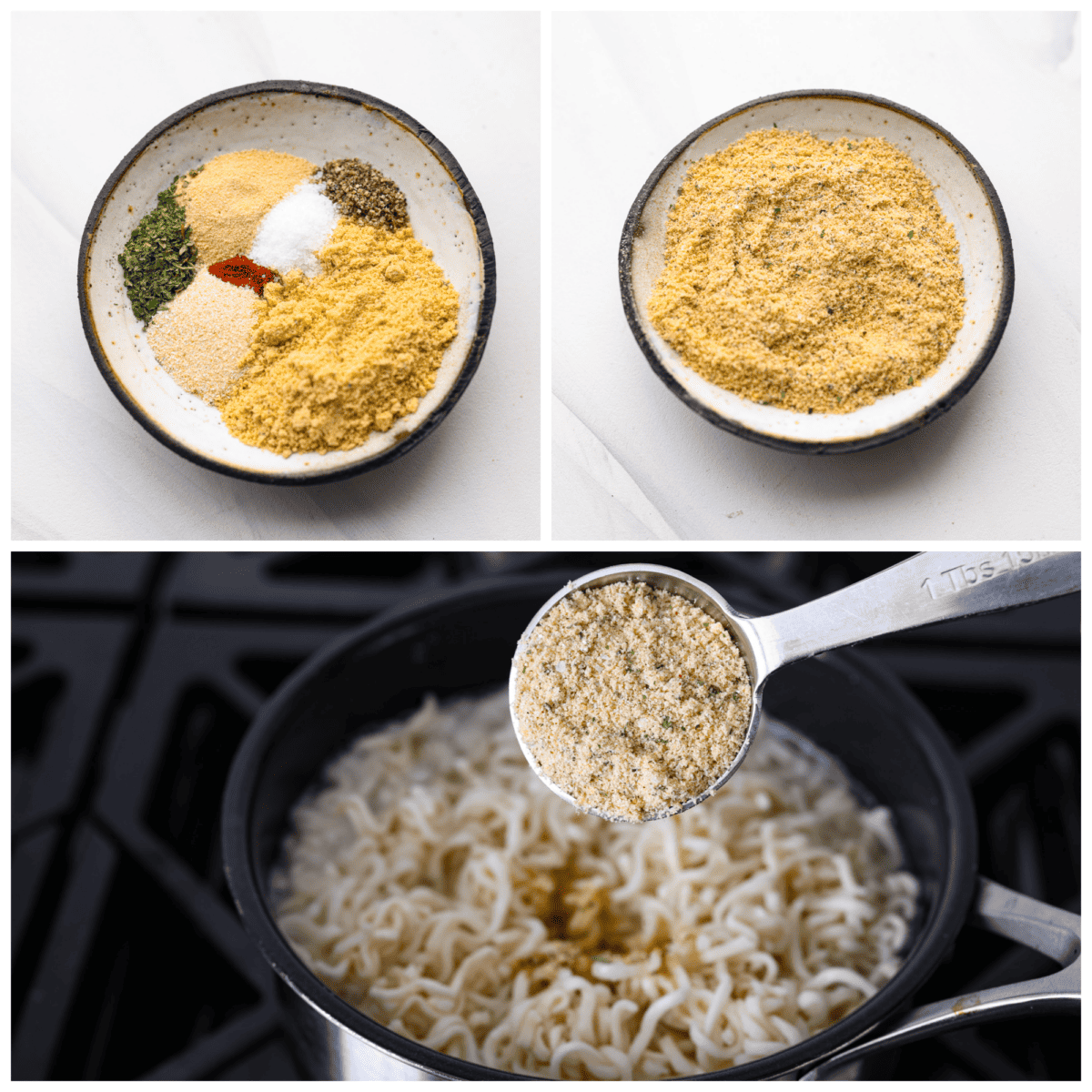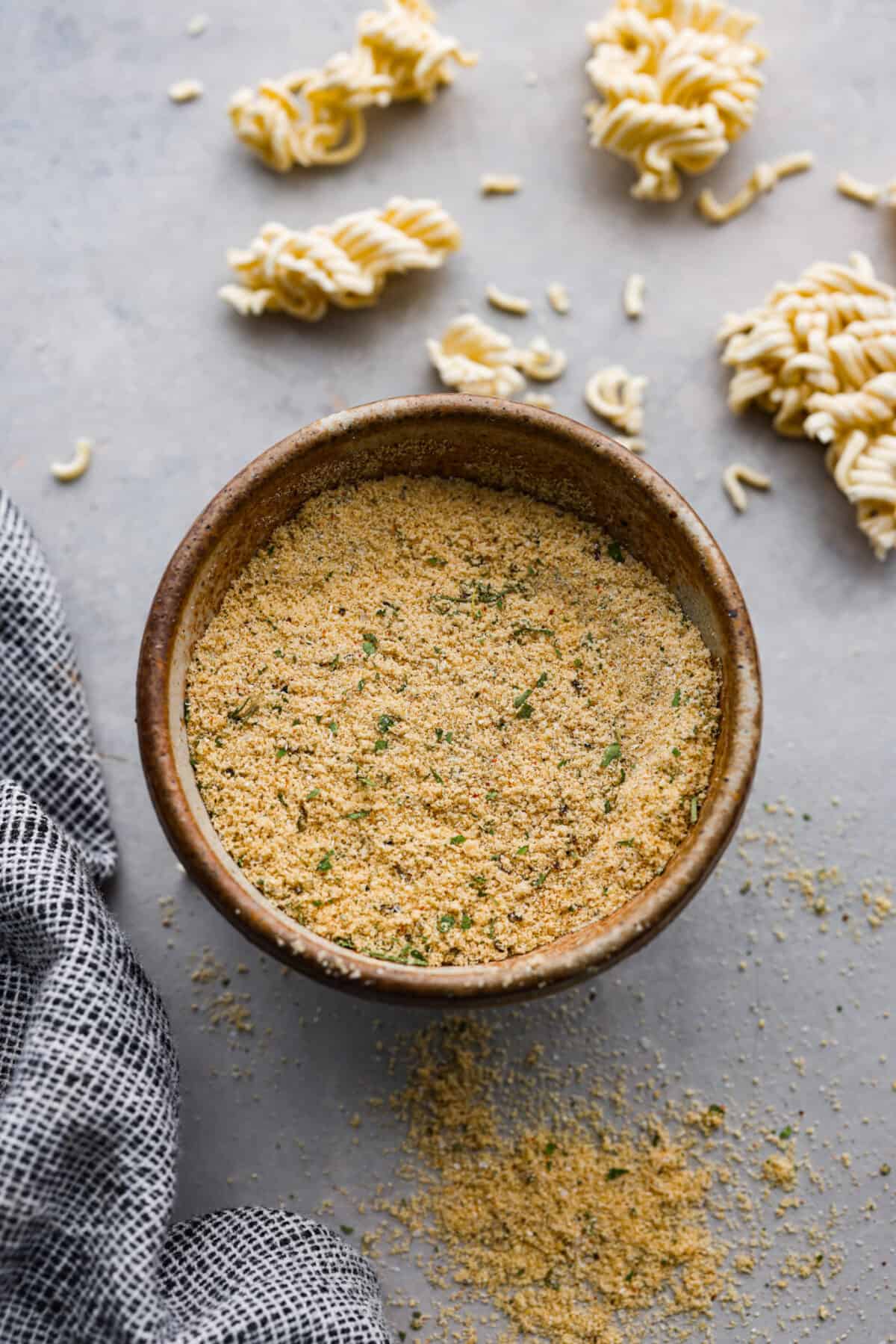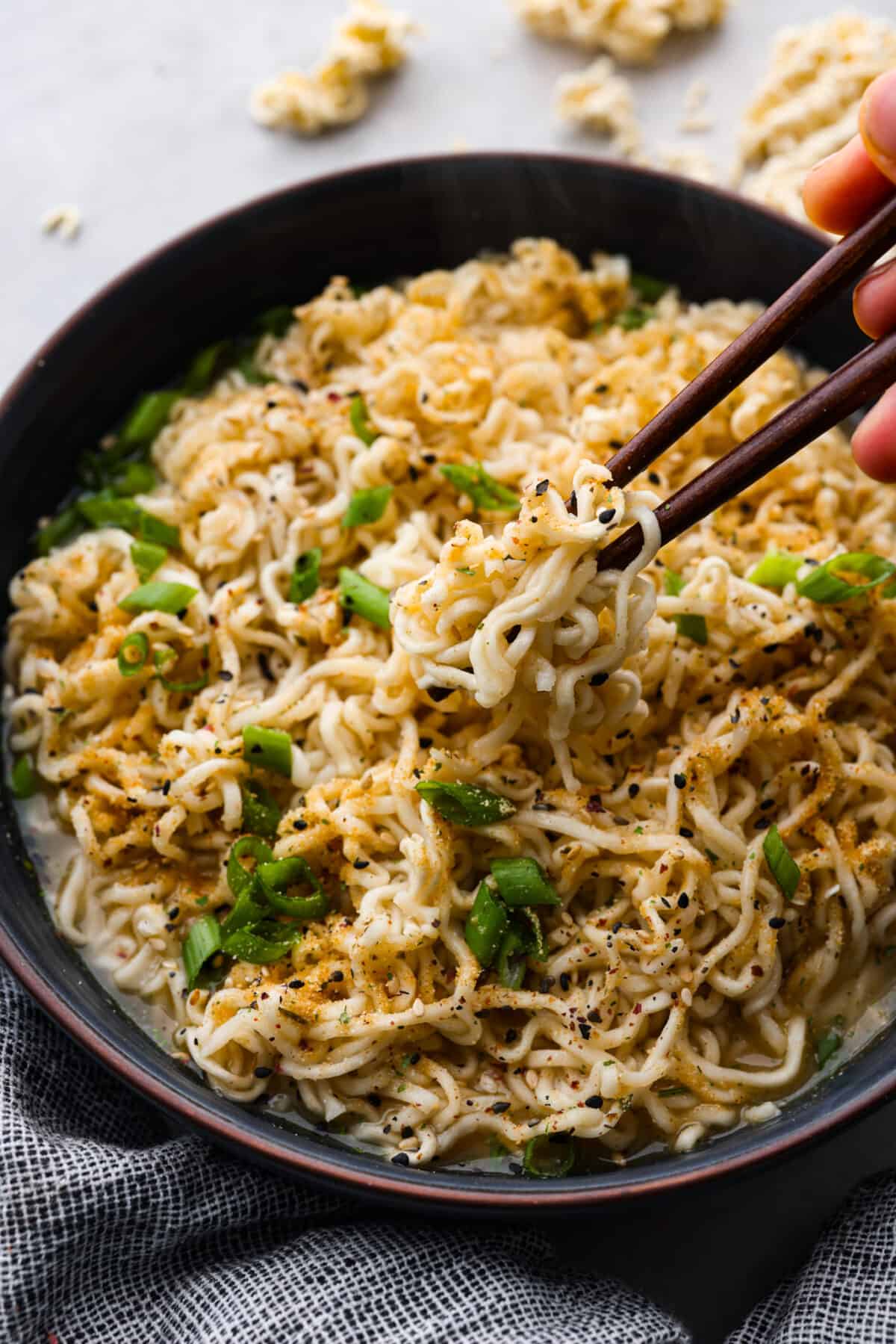Ditch the flavor packet and elevate your bowl with this homemade ramen seasoning! Packed with savory spices and a punch of garlic, it’s the secret ingredient to restaurant-worthy broth in just minutes.
If you’re looking for more great seasoning recipes to jazz up your favorite dishes with, try these! The best taco seasoning, chili seasoning, and fajita seasoning!
Forget those sodium-bomb seasoning packets lurking in your cupboard. This homemade ramen seasoning is about to blow your mind. Just a sprinkle of this magic dust turns that pack of dry noodles into a flavorful and delicious meal, made with garlic, onion, and paprika. Seriously, it’s so good, you’re going to rethink the way you view instant noodles. (And the good news is, you can use it for a lot of other dishes as well! Check out the tips section below!)
Plus, customizing your broth is a breeze – spicy, savory, you name it! If you want to add a dash of cayenne pepper for some kick, go for it! It’s so easy to adjust to taste. So, ditch all of those preservatives and unnecessary chemicals and whip up a batch of this homemade ramen seasoning instead! It makes the perfect bowl of ramen.
But to get more granular (literally), pretty much every brand of instant noodles seasoning contains dehydrated alliums and herbs like onion, garlic, scallions, chives, and cilantro, to name a few. Some, like Shin Ramyum and Jin, also have dried mushroom or cabbage powder which are natural enhancers of savory flavors.

Ingredients in Ramen Seasoning
You may already have everything you need to make this ramen seasoning in your pantry right now! It’s just made of chicken bouillon powder and a few simple spices! Check out the recipe card at the end of the post for exact measurements.
- Chicken Bouillon Powder: The savory base, this powder forms the foundation of the seasoning, adding that rich, umami depth that makes ramen so satisfying.
- Garlic Powder: A must-add for a savory kick of flavor.
- Onion Powder: Sweet and savory, another base layer for depth.
- Dried Parsley: An earthy, fresh touch to balance the heavier flavors in the ramen seasoning.
- Paprika: Adds a touch of color and warm flavor.
- Black Pepper: Classic spice for a touch of heat.
- Kosher Salt: Balances all the flavors and enhances everything else.
How to Make it and How Much to Use
Once you have your batch of delicious ramen seasoning mixed up, you will want to use 1 tablespoon of it per each ramen packet! If you have extras, it’s also easy to store for later.
- Combine: Measure and combine all the ingredients in a bowl then whisk to combine.
- Add to Noodles: Add 1 tablespoon of ramen seasoning to 1 package of cooked ramen noodles. Stir the seasonings into the water ratio according to the Instant ramen noodle instructions. Then adjust the seasonings to your preference!
- Store Unused Portion: Store in an sealed airtight container in a cool dry place for up to 6 months.

A few ways to switch up this recipe for homemade ramen seasoning, and make it just how you like it! This seasoning is also multi-purpose, and I’ve included some extra ways to use it.
- Make it Vegetarian / Vegan: Swap out the chicken bouillon powder for 2 tablespoons of powdered vegetable soup mix.
- Want More Spice? If you want your ramen seasoning to be spicier, add a pinch of red chili flakes or more pepper until you reach your desired flavor!
- For Popcorn: Sprinkle this over some popcorn for a tasty savory version!
- In Soup: Add a tablespoon of the seasoning to add more flavor to soup or stew! I like to use it in chicken noodle soup.
- For Fries: Use it to season crispy French fries with!
- In Rice: Mix some of this seasoning into cooked white rice for a savory side.

Store your ramen seasoning in a sealed jar or other airtight container in a cool, dry place for 6 months. You’re going to love having it on hand because it works for such a wide array of dishes.

Upgrade Instant Ramen Noodles With Your Own Homemade Seasoning Packet — You Can Do This!
FAQ
What ingredients are in packaged ramen?
What is the packet that comes with ramen?
Are ramen seasoning packets healthy?
What are Ramen seasoning packets?
Ramen seasoning packets contain a mix of dried, concentrated ingredients calibrated to add maximum flavor. Here are some of the essential elements commonly found: Salt – The primary flavor that seasons the broth. Monosodium glutamate (MSG) – Enhances savory umami flavor. Dried onion and garlic – Provides a savory, aromatic base.
Are ramen noodles gluten free?
Ramen noodles are not gluten free as their main ingredient is wheat flour. The wheat based ramen noodles or refined wheat flour ramen noodles are cut into noodle strips from a dough of wheat. Wheat and its products contain gluten which are not suitable to ingest by individuals who have gluten intolerance. Gluten free ramen are now a days introduced into the market.
What are some examples of ramen seasoning?
Some examples of flavors we can expect from ramen seasoning include beef flavor, chili flavor, soy sauce flavor, and pork flavor. Most restaurants will use a seasoning mix that has a blend of herbs and spices. Why Do We Need Ramen Seasoning? Ramen seasoning is absolutely crucial when it comes to giving ramen noodles flavor.
How do you use Ramen seasoning mix?
The easiest way to use this ramen seasoning mix is to make simple homemade ramen. Here’s how to make 1 serving of it. Bring 2 cups of water to a boil in a small pot. Add your noodles (either fried noodles from an instant ramen pack or dried ramen noodles). Boil according to package directions, usually 3 minutes.
